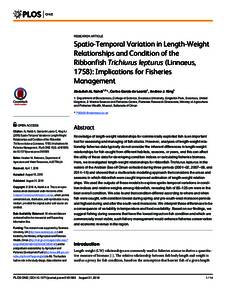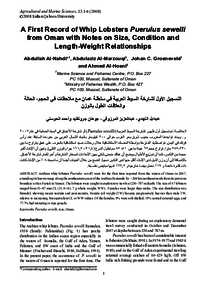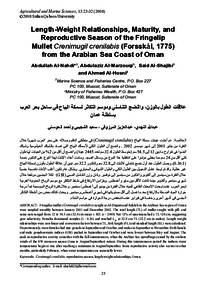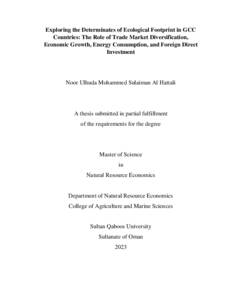Document
Spatio-temporal variation in length-weight relationships and condition of the ribbonfish Trichiurus lepturus (Linnaeus, 1758) : implications for fisheries management.
Identifier
DOI: 10.1371/journal.pone.0161989
Contributors
Garcia de Leaniz, Carlos., Author
King, Andrew J., Author
Publisher
Public Library of Science.
Gregorian
2016-08
Language
English
English abstract
Knowledge of length-weight relationships for commercially exploited fish is an important tool for assessing and managing of fish stocks. However, analyses of length-weight relationship fisheries data typically do not consider the inherent differences in length-weight relationships for fish caught from different habitats, seasons, or years, and this can affect the utility of these data for developing condition indices or calculating fisheries biomass. Here, we investigated length-weight relationships for ribbonfish Trichiurus lepturus in the waters of the Arabian Sea off Oman collected during three periods (2001-02, 2007-08, and 2014-15) and showed that a multivariate modelling approach that considers the areas and seasons in which ribbonfish were caught improved estimation of length-weight relationships. We used the outputs of these models to explore spatio-temporal variations in condition indices and relative weights among ribbonfish, revealing fish of 85-125 cm were in the best overall condition. We also found that condition differed according to where and when fish were caught, with condition lowest during spring and pre-south-west monsoon periods and highest during and after the south-west monsoons. We interpret these differences to be a consequence of variability in temperature and food availability. Based on our findings, we suggest fishing during seasons that have the lowest impact on fish condition and which are commercially most viable; such fishery management would enhance fisheries conservation and economic revenue in the region.
Member of
ISSN
1932-6203
Resource URL
Category
Journal articles




